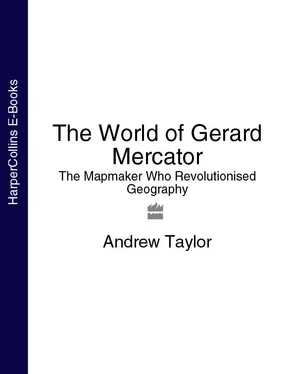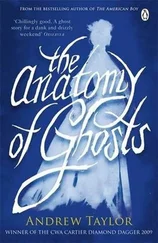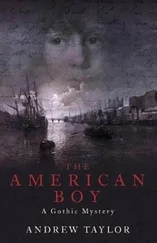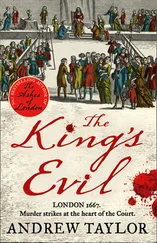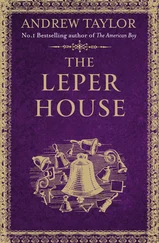1 ...6 7 8 10 11 12 ...18 WHEN MERCATOR was born in 1512, the known world was, thus, still surrounded by shadows. By the time he died eighty-two years later, merchants and bankers were making vast fortunes by bringing regular cargoes back from the East Indies by sea, *while the apparently limitless gold and silver †plundered from the ancient civilizations of the New World to the west had turned the economies of Spain and Europe upside down. During his lifetime, the traders, financiers, and businessmen of Europe took control of the new lands that had been revealed, and they did so because mariners gradually took control of the seas.
In the Middle Ages, there had been no sense that knowledge could be outdated, that the wisdom of the ancients could be challenged by experiment, observation, or reason. Religion, too, had been buttressed by that same sense of stability. Suddenly, such challenges seemed to be happening all the time. Reflecting the frenetic pace of discovery, George Beste, who sailed the northern seas later in the sixteenth century with the English explorer and sometime pirate Martin Frobisher, would write with a mixture of awe and excitement: “Within the memory of man, within these fourscore years, there hath been more new countries and regions discovered than in five thousand years before; yea, more than half the world hath been discovered by men that are yet (or may very well for their age be) alive.” 15Within eight decades, in other words, the size of the known world had doubled.
FOR MORE THAN two hundred years, European mariners had prepared sketch maps to show the coastlines and the approaches to ports in Europe. But the maps that were available were virtually useless for long-distance navigation. The so-called portolan 16charts were often produced as an accompaniment to written descriptions of the coastal features, compiled by sailors for themselves or their close associates and based largely on their experience of the coasts that they illustrated. They were drawn by detailed observation and with careful reference to the mariner’s compass, but they had generally no lines of latitude and longitude, no learned references or legends. They took no interest in interior features; river mouths or distinctive skylines visible from the sea might be noted, but cities, inland roads, even mountain ranges were almost always omitted. They were maps by seamen, for seamen – tools of the trade. Rough mapping was the stock-in-trade of any experienced mariner. The only surviving map drawn by Columbus himself, showing northwest Hispaniola, now the northern coast of Haiti, demonstrates how accurately a skilled seaman could make a running survey of an unknown coastline. But the sailors’ rough sketches, like the portolan maps, made no allowance for the curvature of the Earth.
Even Waldseemüller’s groundbreaking world map was constructed on a projection originally devised by Ptolemy in the second century AD. Mariners knew that any accuracy in following the traditional maps with which they were provided over great distances was impossible, and cartographers understood why. Michiel Coignet, a chartmaker of Antwerp, pointed out later in the century 17that there was simply no point in laying off a course according to compass bearings as they appeared on a traditional map; the straight lines on the flat sheet of paper, transferred to the curved surface of the globe, would produce a series of spiral curves that would take a ship drastically off course.
The solution to this problem, navigators found, was a combination of dead reckoning – estimating their position by judging the distance the ship had sailed along a known compass bearing – and keeping as much of their course as possible due east or west. By “sailing the latitudes,” the parallel lines around the Earth’s surface, they could avoid the distorting effects of the curvature of the Earth. The traditional sailing directions for reaching the West Indies from Europe were “south until the butter melts, then due west into the sunset.” 18
In practice, ships sailed miles out of their way, aiming far to the east or west of their chosen destination in order to find the correct latitude. The unreliability of navigational instruments, the difficulty of taking sightings to check latitude on the rolling deck of a ship, and the need for frequent tacking in contrary winds all made matters worse; but the underlying problem was that neither sailors nor scholars had tackled the problem of reproducing the curved surface of the spherical Earth on a flat map. While voyages were short and close to land, the problem of projection could be more or less ignored; following a line ruled straight on a map would simply result in a small navigational error. As the ships ranged farther from the well-known waters of the Mediterranean, though, the effects of this failing became more dramatic. Men could sail the seas of the world with greater confidence than ever before, but they could not map them accurately.
Chapter Three A Small Town on the River Scheldt
THE RESEARCHES OF SCHOLARS and geographers, the work of printers and booksellers, and the discoveries of hard-bitten sailors and explorers had combined to make the early sixteenth century the most favorable time in which a man of Mercator’s talents and interests could have been born. But the land in which he grew up was riven by political factions and smoldering with religious hatreds.
At the start of the new century, the birth in 1500 of the future Holy Roman Emperor Charles V in the ancient merchant city of Ghent in Flanders marked the climax of more than 150 years of schemes, machinations, and marriages among the ruling families of Europe. While the adventurers of Spain and Portugal were discovering new worlds abroad, in Europe the dukes of Burgundy had been busily laying their hands on as much of the old one as they could, marrying their way into a realm that eventually stretched across the prosperous financial heartland of northern Europe. They turned marriage from a sacrament to a strategy. During a century and a half of buying, inheriting, and most of all marrying into new possessions, they could have taught the rest of Europe a lesson, had anyone thought to heed it: War could be profitable, but well-planned matrimony was infinitely more so.
Philip, one of the dukes of Burgundy, was a member of the powerful Habsburg family, who had been building up their own lands in Germany with similar determination throughout the fifteenth century, and he married Joanna of Spain, the daughter of Ferdinand and Isabella, whose own marriage in 1469 had already united the Spanish kingdoms of Aragon and Castile. Charles was the son of Philip and Joanna’s triumphal dynastic marriage, and he steadily inherited individual titles and honors throughout his childhood to make up a patchwork empire that would eventually stretch over more than half the known world.
He was shy and awkward, an unprepossessing figure with the long lower jaw and bulging eyes of the Habsburg line, but when his father died in 1506, he became ruler of the Netherlands and the rest of the Burgundian inheritance. He was just six years old, and his paternal aunt, Margaret of Austria, acted as regent. By the time he was sixteen, Charles’s inherited lands stretched not just through Spain and parts of Italy but also across the apparently limitless Spanish possessions in the Americas. Three years later, in 1519, the death of his paternal grandfather, Maximilian, pushed the borders of his realm farther to the east, where his Habsburg ancestors were the most powerful dynasty in central Europe, ruling lands in Austria, Carinthia, Slovenia, and the Tyrol. *
The Habsburgs also held a virtually hereditary position in Germany as Holy Roman Emperors, but although they had occupied the imperial throne for nearly eighty years, †on his grandfather’s death Charles still had to win the support of the seven electors, the German princes who formally approved the succession of the Holy Roman Empire. The successful but expensive campaign of bribery with which he secured the imperial crown left him crippled by debt throughout his reign, ‡and he faced a constant struggle to raise money to pay the massive armies on which his grandiose campaigns to maintain his authority depended.
Читать дальше
